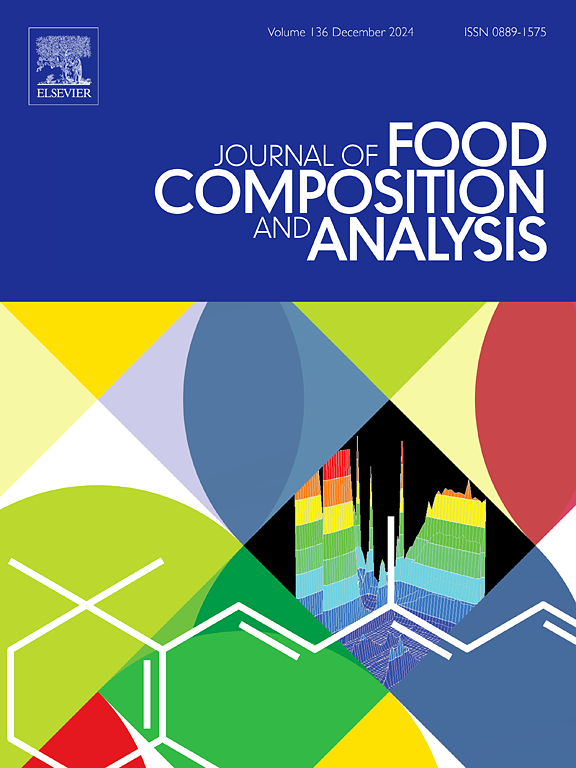An integrated approach including “Content-Extractives-Activity” for comprehensive quality control of dietary supplement granules by portable near-infrared spectrometer coupled with the entropy weight method: Eucommia ulmoides granules as an example
IF 4
2区 农林科学
Q2 CHEMISTRY, APPLIED
引用次数: 0
Abstract
Dietary supplements, with nutritional and health benefits, are widely used worldwide. Ensuring the quality of dietary supplements has become particularly important as demand increases. Current traditional methods of quality assessment tend to concentrate solely on the content of certain active ingredients; nevertheless, the bioactivity of a product, which serves as a more direct indicator of its quality, is frequently overlooked. Thus, a comprehensive "Content-Extractives-Activity" quality evaluation system was developed for dietary supplements using a portable near-infrared spectrometer combined with entropy weight method in this study. Taking Eucommia ulmoides granules as the object of study, near-infrared spectroscopy (NIRS) was used to predict the pinoresinol diglucoside content, ethanol-soluble extractives content, bioactivity indicators related to antioxidant damage such as cell viability value and intracellular malondialdehyde content, as well as comprehensive index. The best models all obtained satisfactory prediction results with correlation coefficient of prediction in the range of 0.89–0.97 and residual predictive deviation in the range of 1.81–4.19, which demonstrated the feasibility of the method for the rapid evaluation of the integrated quality of dietary supplements by NIRS.
求助全文
约1分钟内获得全文
求助全文
来源期刊

Journal of Food Composition and Analysis
工程技术-食品科技
CiteScore
6.20
自引率
11.60%
发文量
601
审稿时长
53 days
期刊介绍:
The Journal of Food Composition and Analysis publishes manuscripts on scientific aspects of data on the chemical composition of human foods, with particular emphasis on actual data on composition of foods; analytical methods; studies on the manipulation, storage, distribution and use of food composition data; and studies on the statistics, use and distribution of such data and data systems. The Journal''s basis is nutrient composition, with increasing emphasis on bioactive non-nutrient and anti-nutrient components. Papers must provide sufficient description of the food samples, analytical methods, quality control procedures and statistical treatments of the data to permit the end users of the food composition data to evaluate the appropriateness of such data in their projects.
The Journal does not publish papers on: microbiological compounds; sensory quality; aromatics/volatiles in food and wine; essential oils; organoleptic characteristics of food; physical properties; or clinical papers and pharmacology-related papers.
 求助内容:
求助内容: 应助结果提醒方式:
应助结果提醒方式:


